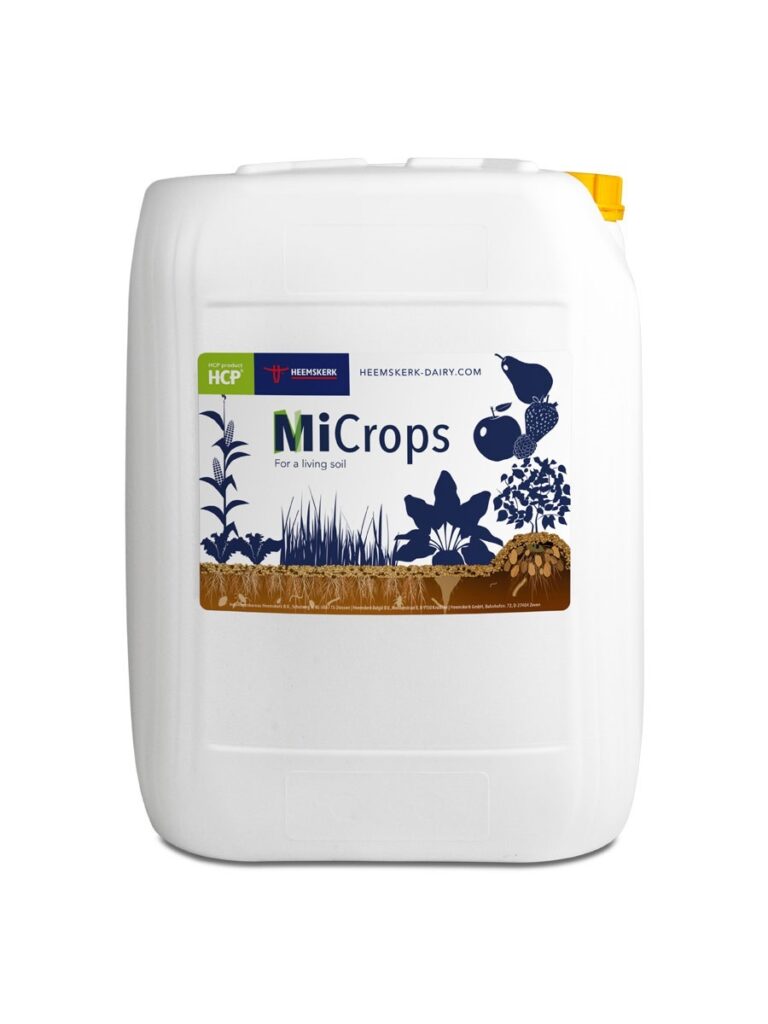Improving soil health in the long term
“Keeping the soil productive, with less manure’’, is what Jos Welles has in mind. To achieve that, he started to use Grow PEQ® MiCrops this spring. Simultaneously with the manure application on his grassland, a trial field was established on 10 ha of grassland at the end of February.
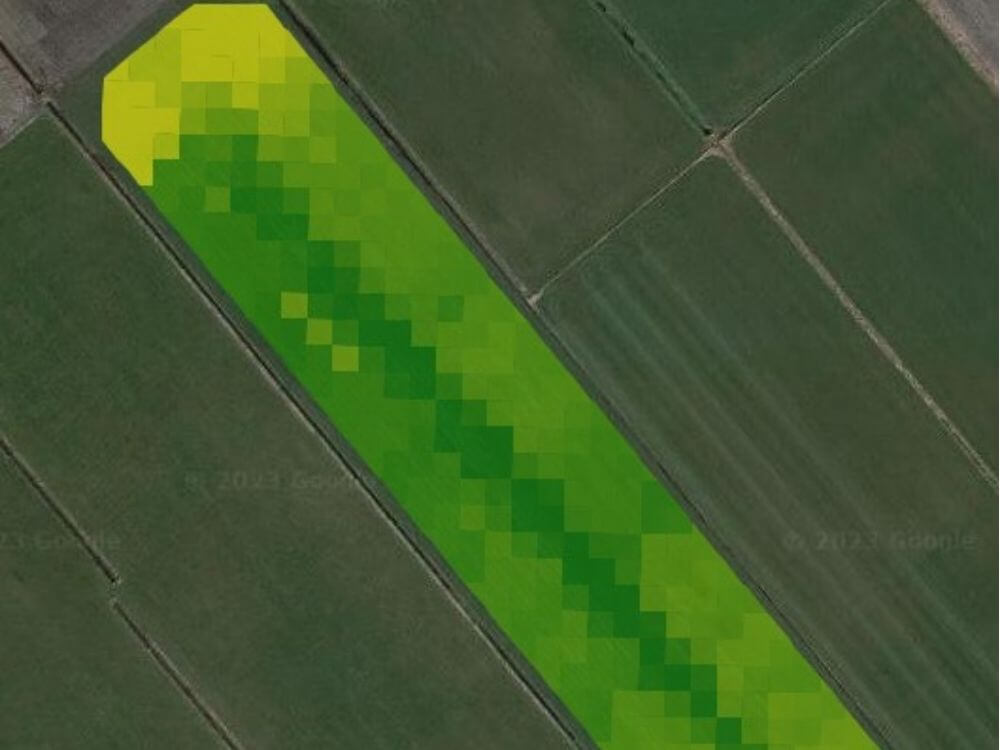
On the mixed peat/sand soil in De Krim (Overijssel, The Netherlands), Jos, Vivian and their son Matthijs milk 100 dairy cows in partnership and keep about 60 young stock. From the 50 hectares of land used by the farm, 9 hectares are used for growing maize and the remainder is used as grassland. Every year, 2 ha of maize is purchased to cover their roughage position.
3 months after manure application with a manure injector, the treated track with Grow PEQ® MiCrops can clearly be seen by satelite maps.
Simultaneous with manure application
‘Less and less manure is allowed on the land, but we want to keep the quality in the silage. So for the long term we will have to improve the quality of the soil to keep it productive,’ Jos believes. The effect of Grow PEQ MiCrops, which stimulates soil life by adding bacteria, caught therefore his attention. ‘Especially because it can be applied simultaneously with the manure application. It requires little extra handling in this way’.
More fungal threads
‘We clearly saw a difference in the soil. On the treated sections, not only the grass was greener, there were many more fungal threads to be seen than on the untreated sections. The difference could be seen exactly on the border of the treated section and the non-treated section’. Fungi protect the root and allow it to absorb more nutrients. A soil analysis shows that soil life is greatly improved on the treated section compared to the untreated section. In addition, the ratio of fungi to bacteria has greatly improved.
| Biostimulant | Untreated | Treated MiCrops | Increase |
| Soil life | 522 | 864 | +342 (+66%) |
| Fungi | 37 | 61 | |
| Bacteria | 63 | 39 |
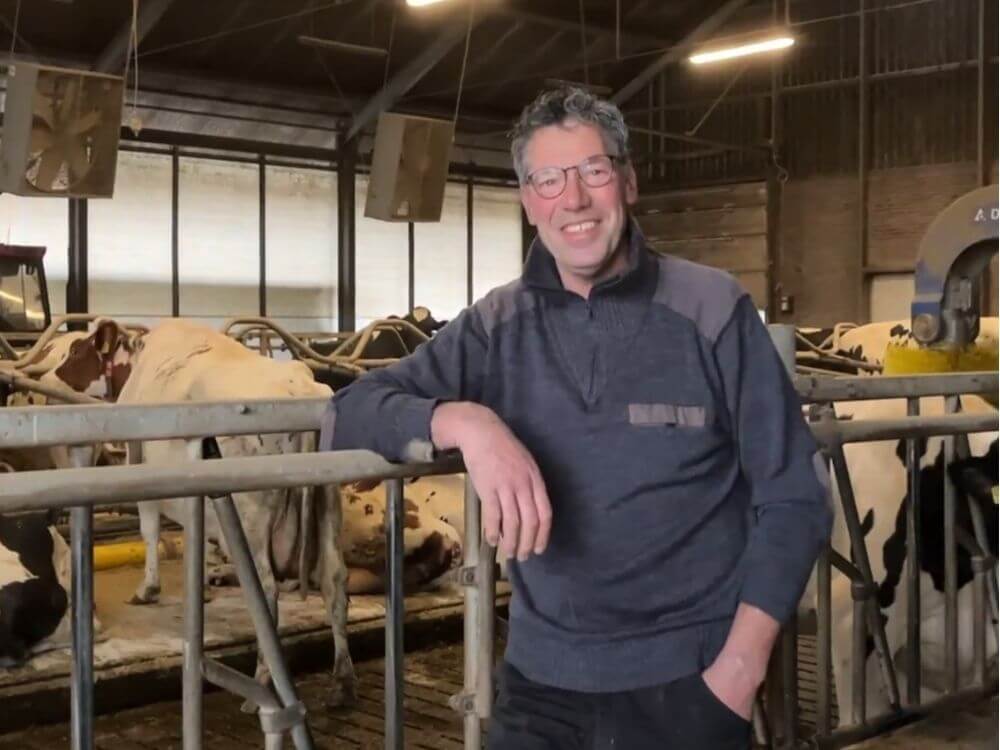
‘More clover grew on the treater sections and after the drought the grass on the treated sections recovered faster.’
Jos Welles
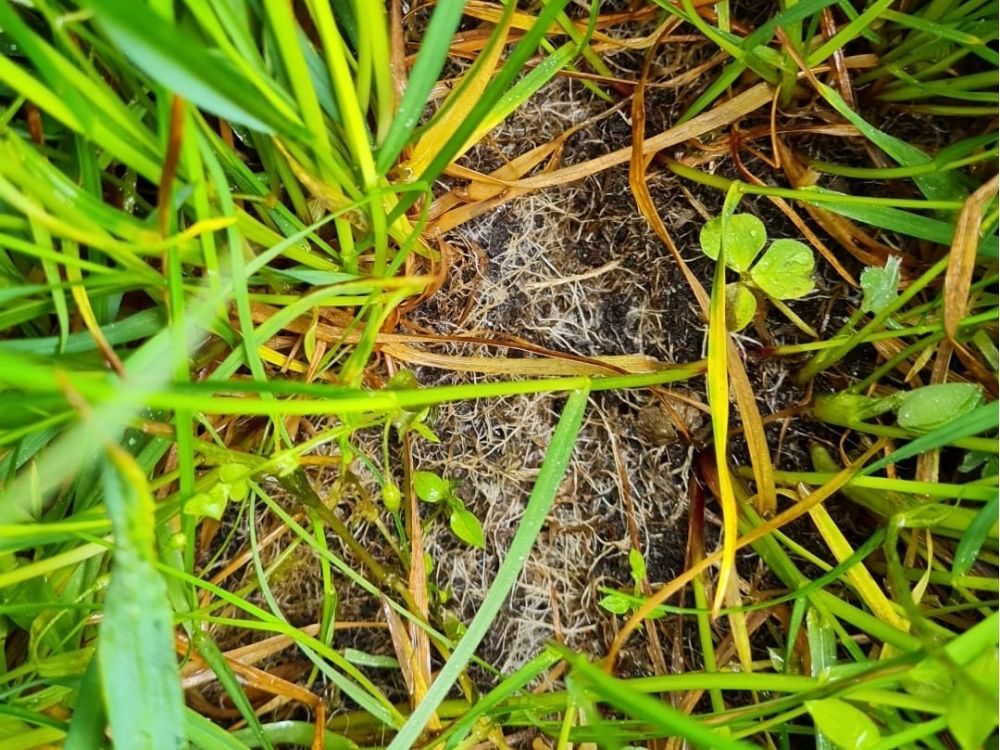
More clover
Lots of soil life and a good fungal-bacterial ratio not only ensures more yield, but also better plant resistance. And that is exactly what Jos saw back in the dry period. ‘More clover grew on the treated parts and after the drought the grass on the treated parts had recovered faster. With the first and second cuts, the DM yield was clearly higher too. With the third cut that lead decreased a bit, but then it came back again’.
On the treated parts, the fungal threads are clearly visible.
More clover
Lots of soil life and a good fungal-bacterial ratio not only ensures more yield, but also better plant resistance. And that is exactly what Jos saw back in the dry period. ‘More clover grew on the treated parts and after the drought the grass on the treated parts had recovered faster. With the first and second cuts, the DM yield was clearly higher too. With the third cut that lead decreased a bit, but then it came back again’.
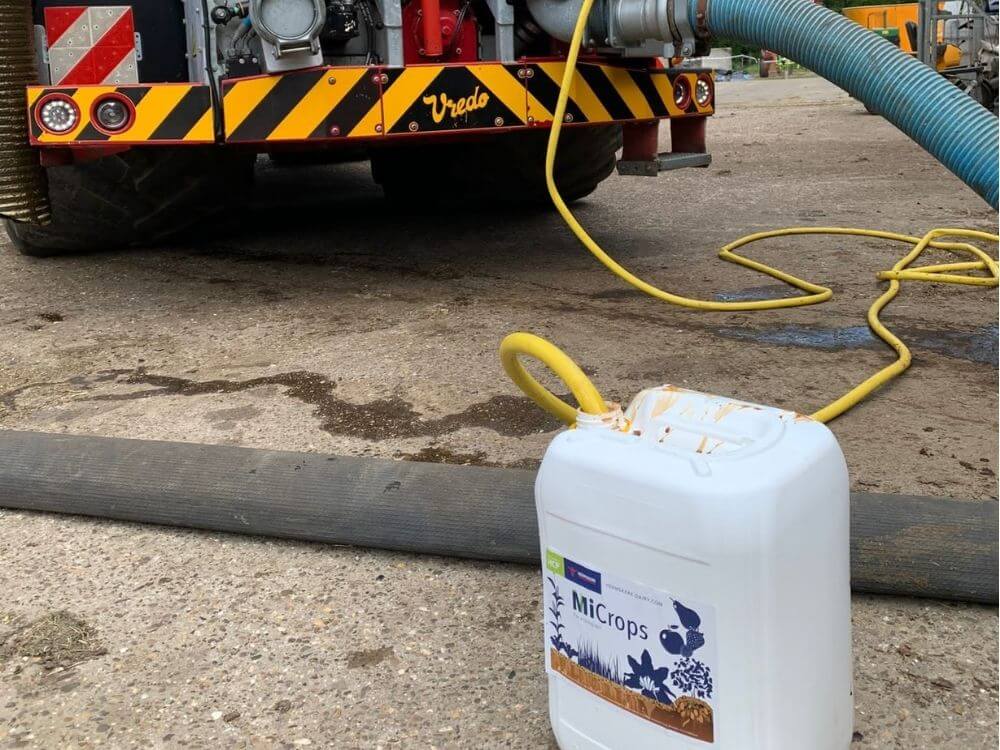
10% more yield
On several trial fields across the country, an average of 10% more yield was measured. Despite the fact that no fresh grass samples were taken at the Welles farm, Jos Welles recognizes this increase in yield. ‘If you can expect 10% more yield, the investment is quickly paid off,’ Welles counters. Next year, therefore, it will not stop at those 10 hectares, but he will treat all of his grass fields with Grow PEQ MiCrops.
Grow PEQ® MiCrops can be applied simultaneously with turf fertilization.

